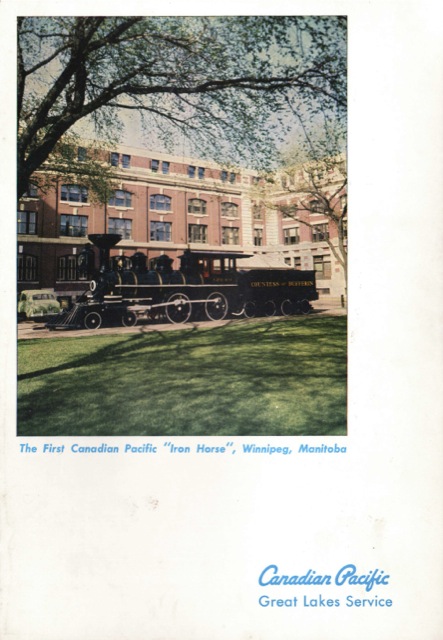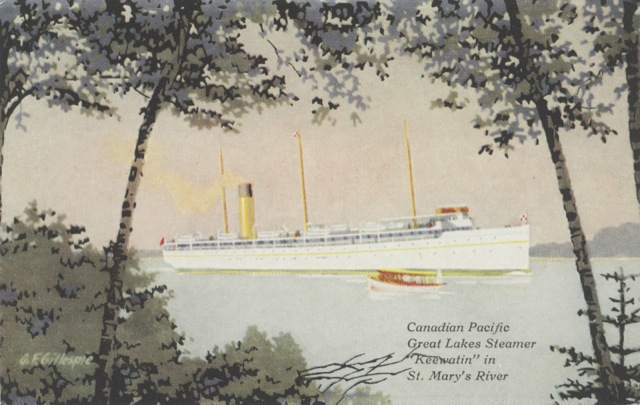The cover of this menu shows the Countess of Dufferin, the first locomotive in Manitoba (and, therefore, all of western Canada). The back of the menu carefully says the locomotive is “labelled C.P.R. No. 1.” In fact, as the Canadian Pacific well knew, the locomotive never was numbered CPR 1 in service, and probably wasn’t named the Countess of Dufferin either. Nor, as some present-day accounts claim, was the locomotive’s owner, Joseph Whitehead, “the fireman on the ‘Rocket’ built by George Stephenson, when in 1825 it became the first engine to run the first railway route between Stockton-on-Tees and Darlington in Yorkshire, England.”
 Click image to download a 1.3-MB PDF of this menu.
Click image to download a 1.3-MB PDF of this menu.
Joseph Whitehead was born in England and may have worked for George Stephenson for a time, but in 1825 he was just 11 years old so almost certainly did not fire the Rocket or other very early locomotives. He moved to Canada in 1850 and became a railroad contractor. The so-called C.P.R. No. 1, meanwhile, was built by Baldwin in 1872 and sold to the Northern Pacific Railroad, which numbered it 21. In 1877, to help fulfill a contract to build a portion of the CPR in Manitoba, Whitehead purchased the locomotive from the cash-strapped NP.
The governor-general of Canada, the Earl of Dufferin, and his wife, Hariot Hamilton-Temple-Blackwood, happened to be on a steamboat heading south on the Red River when the locomotive was being barged north. When the steamboats met at a place called Fisher’s Landing, Whitehead opportunistically promised he would name the locomotive the “Lady Dufferin” if she would give it her blessing. She did, but there’s no evidence that the locomotive ever wore the name Lady Dufferin much less Countess of Dufferin when in service, and contemporary reports about the arrival of the locomotive in Winnipeg say nothing about the name. At the time Lady Dufferin saw it, the locomotive had the number 2, but when Canadian Pacific bought the locomotive from Whitehead in 1883, it renumbered it CRP No. 151.
By 1909, the locomotive, now named the Betsy, was being used as a stationary boiler to power a sawmill in British Columbia. Someone in Winnipeg found it and persuaded the owners to donate it to the city, which applied the “Countess of Dufferin” name and number 1. It is currently in the Winnipeg Railway Museum.

Click image to download a 180-KB PDF of this postcard.
This menu was used in 1963 on the Canadian Pacific steamship Keewatin, built in 1907 as a sister to the Assiniboia. The Keewatin, pictured above in a postcard based on a painting by Gordan F. Gillespie, has been restored and is on display in Port McNicoll, the one-time eastern end of its former Great Lakes route.
